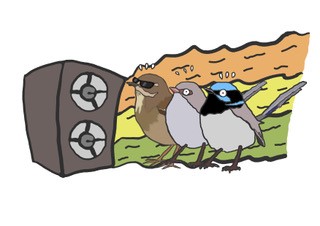E&E PhD Exit Seminar: Gaining information about danger in a challenging world
Information about danger is vital for wildlife, yet can be difficult to gain in complex environments. Anthropogenic and other noise can disrupt acoustic communication, and predators may be visually hidden in cluttered environments.
Speakers
Event series
Content navigation
Description

Information about danger is vital for wildlife, yet can be difficult to gain in complex environments. Anthropogenic and other noise can disrupt acoustic communication, and predators may be visually hidden in cluttered environments. Therefore, to avoid predation, animals need to be flexible and gain information from different sources. In this talk, I share my findings on how birds handle acoustic information about danger in acoustically or visually restricted environments. First, I discuss the challenge of noise on bird acoustic communication, using superb fairy-wrens (Malurus cyaneus) as a model species. Many studies show that noise can disrupt acoustic communication, but rarely know why. I therefore explore how noise disrupts communication, even when noise occurs before or after a signal. Second, I examine the challenge of information use by white-browed scrubwrens (Sericornis frontalis) during incubation, a period typically ignored in studies of communication. Nests are extremely cryptic, and so difficult for predators to find, but this also means that incubating scrubwrens have a very restricted view outside the nest, that leaves them vulnerable to predator approach. I show that incubating scrubwrens assess acoustic cues of danger, and also use of a newly discovered call that appears to signal to group members to stay away from the nest, which could help maintain nest crypsis.
Location
Please note: this seminar will be held in the Eucalyptus Rm and via Zoom, details are included below.
Eucalyptus Room, Rm S205, Level 2, RN Robertson Building (46)
Please click the link below to join the webinar:
https://anu.zoom.us/j/87206812745?pwd=z0E5N3fz_mOAWXSZSEkP10ZI8zUwfw.oeweOw-7tRfRdo6g
Passcode: 171509
Canberra time: please check your local time & date if you are watching from elsewhere.
